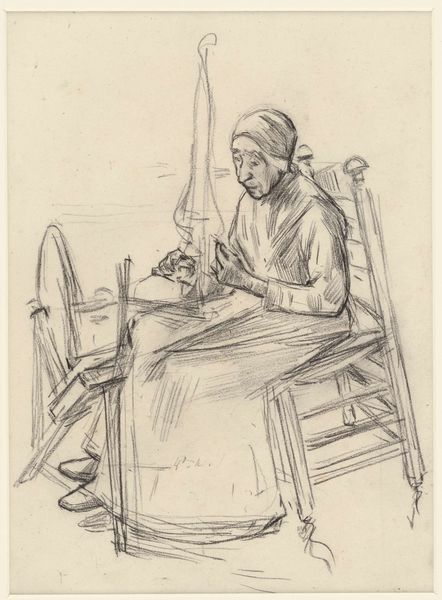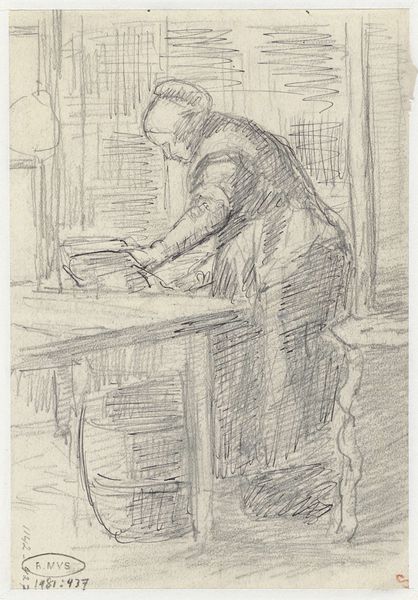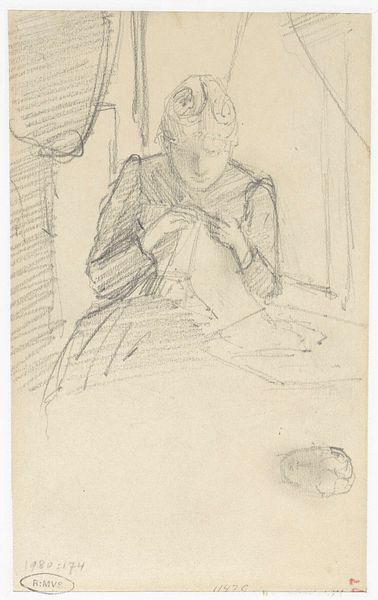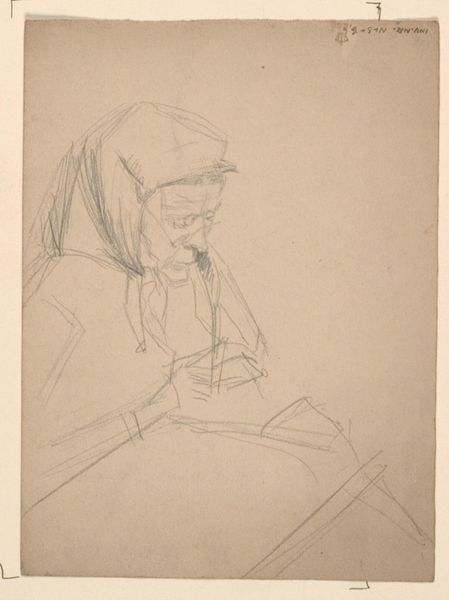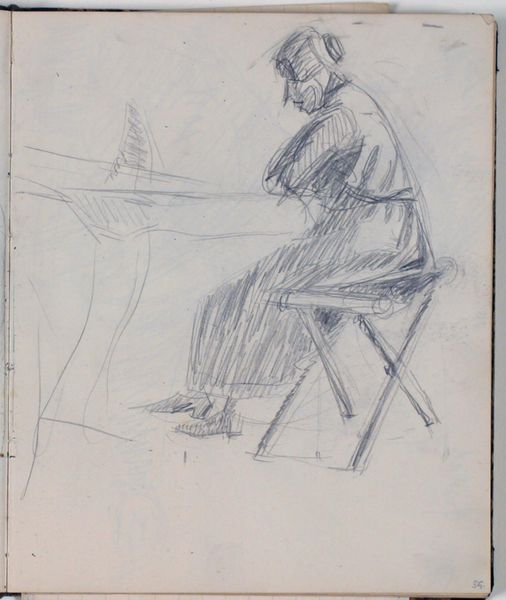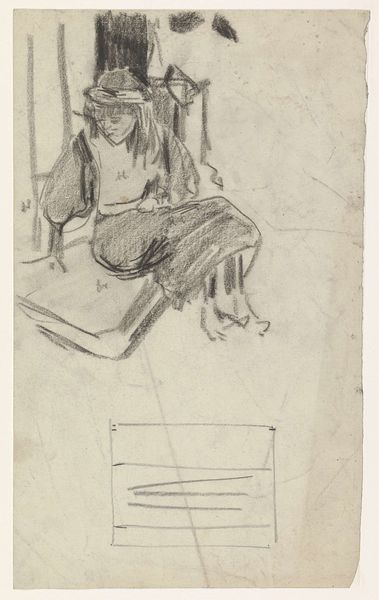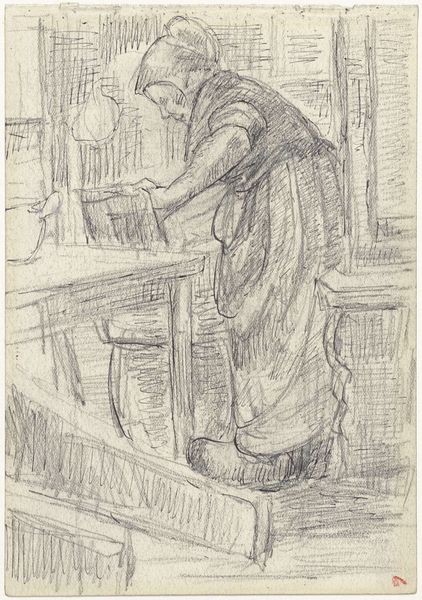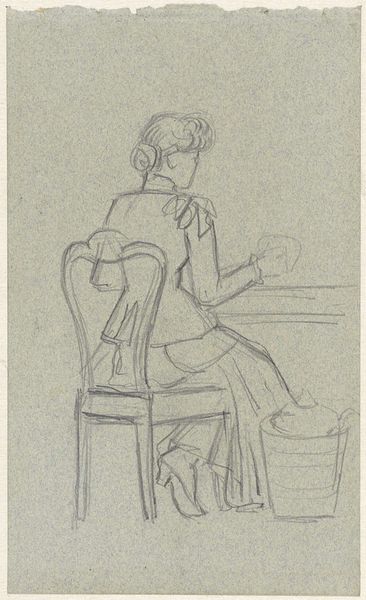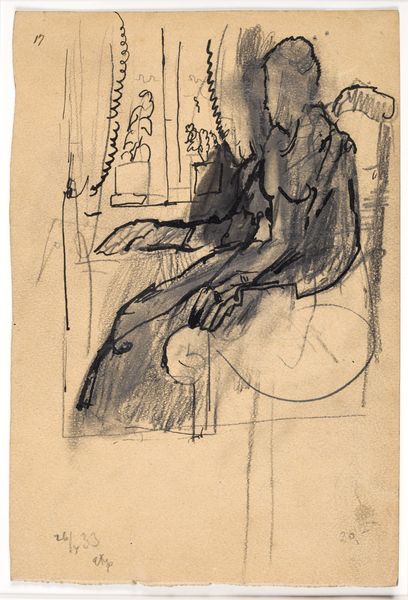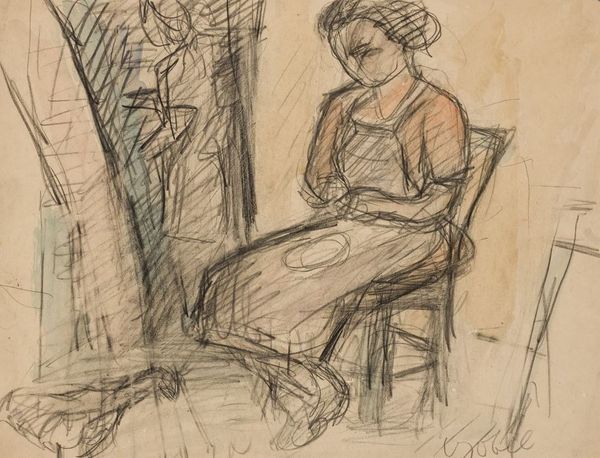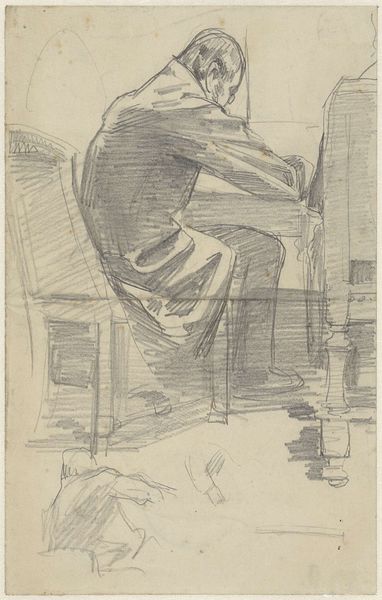
drawing, pencil
#
portrait
#
drawing
#
amateur sketch
#
quirky sketch
#
impressionism
#
personal sketchbook
#
idea generation sketch
#
sketchwork
#
pen-ink sketch
#
pencil
#
sketchbook drawing
#
genre-painting
#
storyboard and sketchbook work
#
sketchbook art
#
realism
#
initial sketch
Dimensions: height 300 mm, width 225 mm
Copyright: Rijks Museum: Open Domain
Curator: This unassuming drawing is "Spinnende Vrouw" or "Spinning Woman" by Anthon Gerhard Alexander van Rappard, likely created between 1868 and 1892. It's executed in pencil. Editor: There's an immediate sense of quiet labor here, wouldn't you agree? The rough lines evoke a humble setting. Curator: Precisely. The composition directs our gaze to the central figure – a woman diligently working at her spinning wheel. The linear quality, evident in the rendering of her form and the architecture of the spinning wheel itself, creates a deliberate sense of depth within this rather minimalist space. The cross-hatching is interesting. Editor: Absolutely. The woman’s head covering speaks volumes about the societal constraints placed upon women's labor. We can almost feel the repetitive motions of her hands. The sketchiness adds a dimension of capturing a transient moment. I mean, consider the social status typically assigned to female labor, often undervalued and underpaid—even when the domestic sphere generated essential commodities. Curator: Agreed, but also look at the expressive linework used to construct the form itself! Van Rappard doesn't depict photographic reality; he selects, abstracts, emphasizes particular formal elements—the conical shape, the round spinning wheel. Editor: And within the context of his time, the artwork also captures a disappearing tradition. Industrialization threatened these home-based, female-driven economies. Curator: Of course, while this context enriches our understanding, let's not forget the artistic construction of visual planes—the contrast of lines used in the chair versus the woman. He also understood negative space, framing it carefully. Editor: Indeed. By focusing our attention on women’s labor—specifically its intersection with technological change, the artist brings into view often neglected areas of social life. Curator: Yes, ultimately, it is this delicate dance between form and socio-historical meaning that enriches the experience of this deceptively simple drawing. Editor: The sketch acts as both a depiction of a moment and a comment about societal structure, one line at a time. It underscores that art can bring quiet revolution to bear upon everyday lives.
Comments
No comments
Be the first to comment and join the conversation on the ultimate creative platform.
